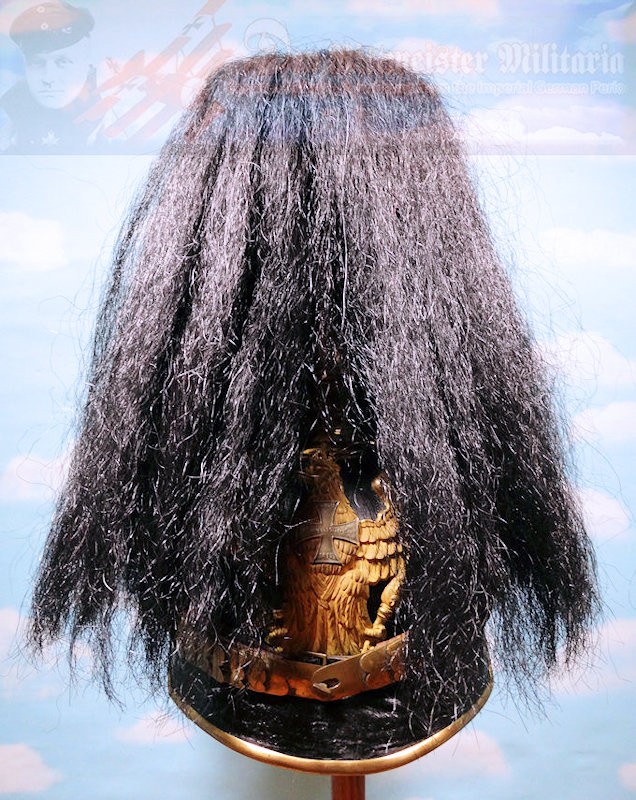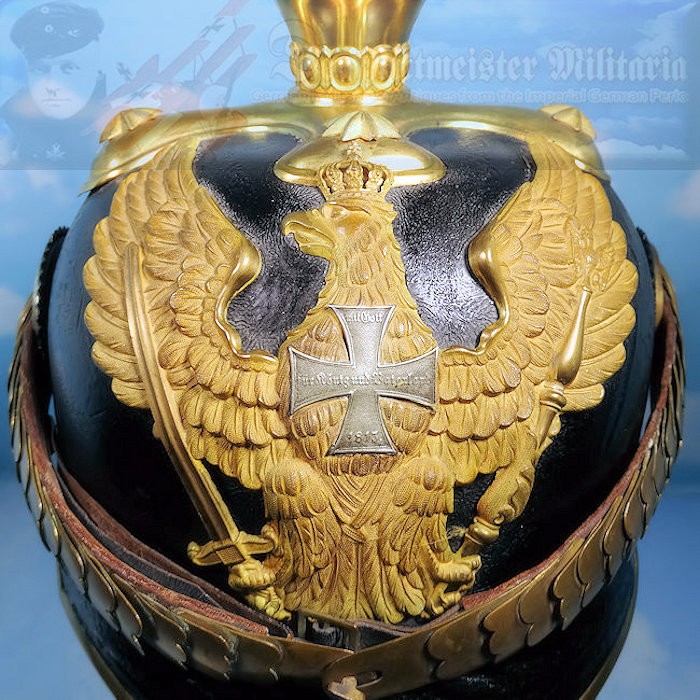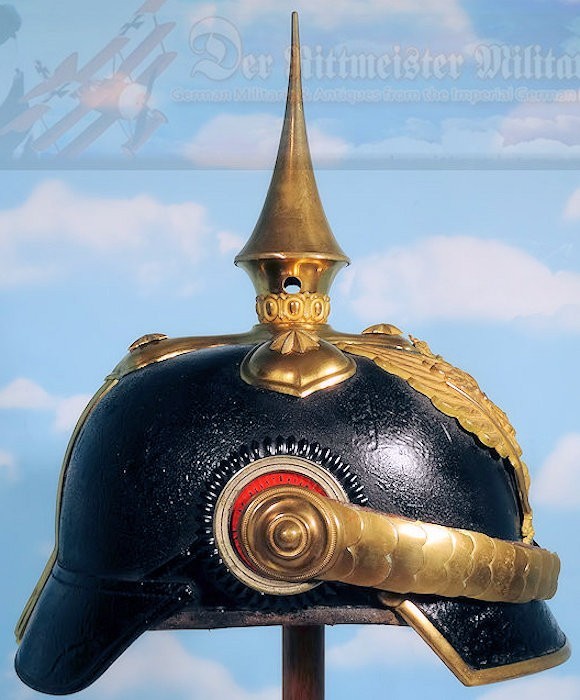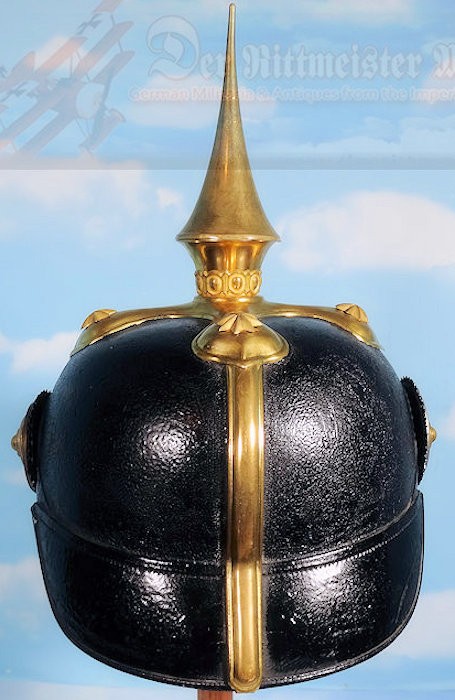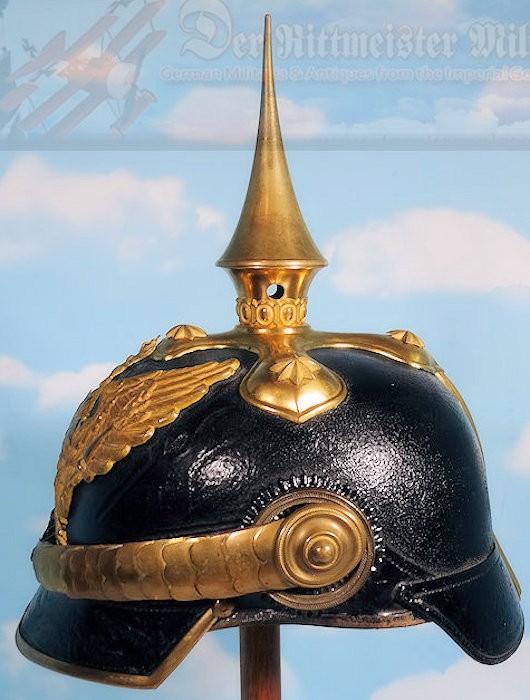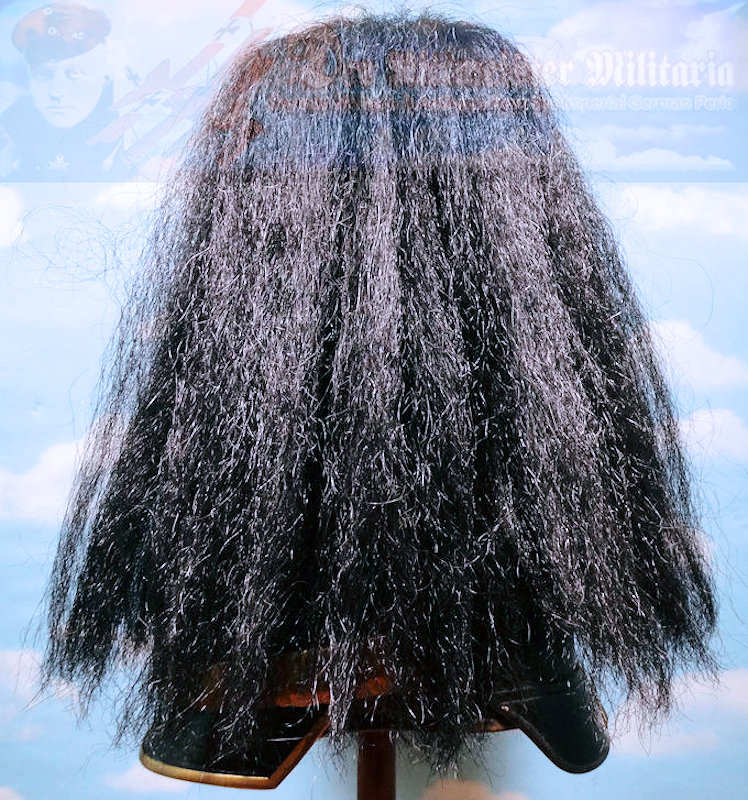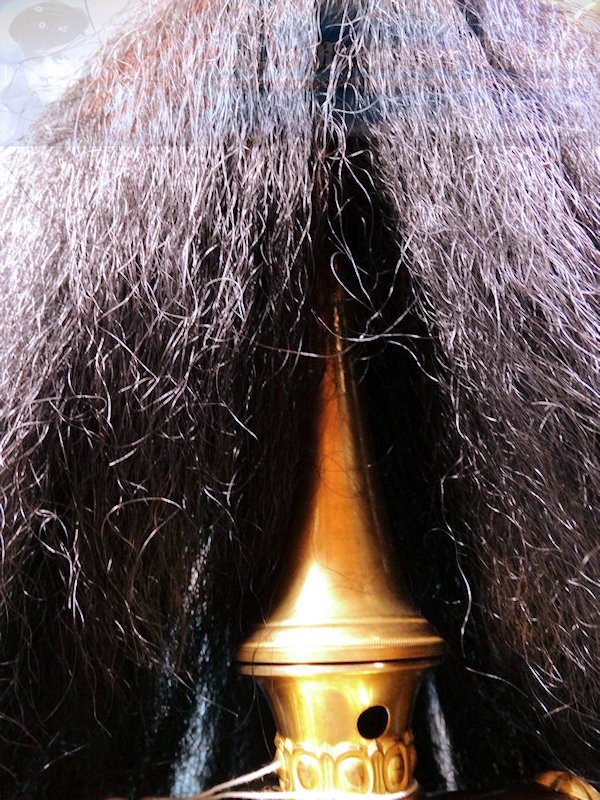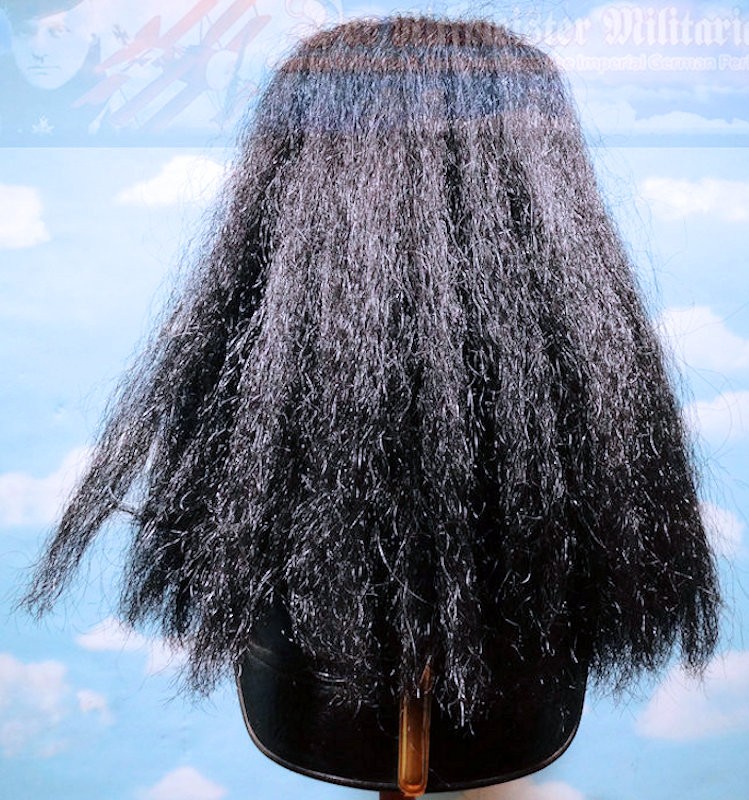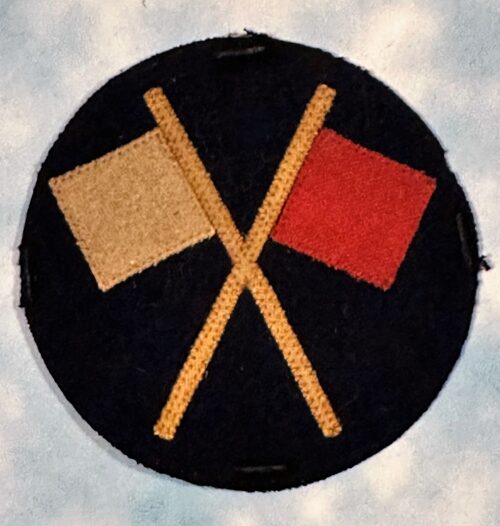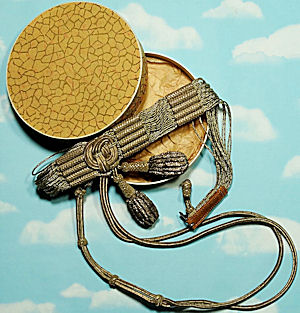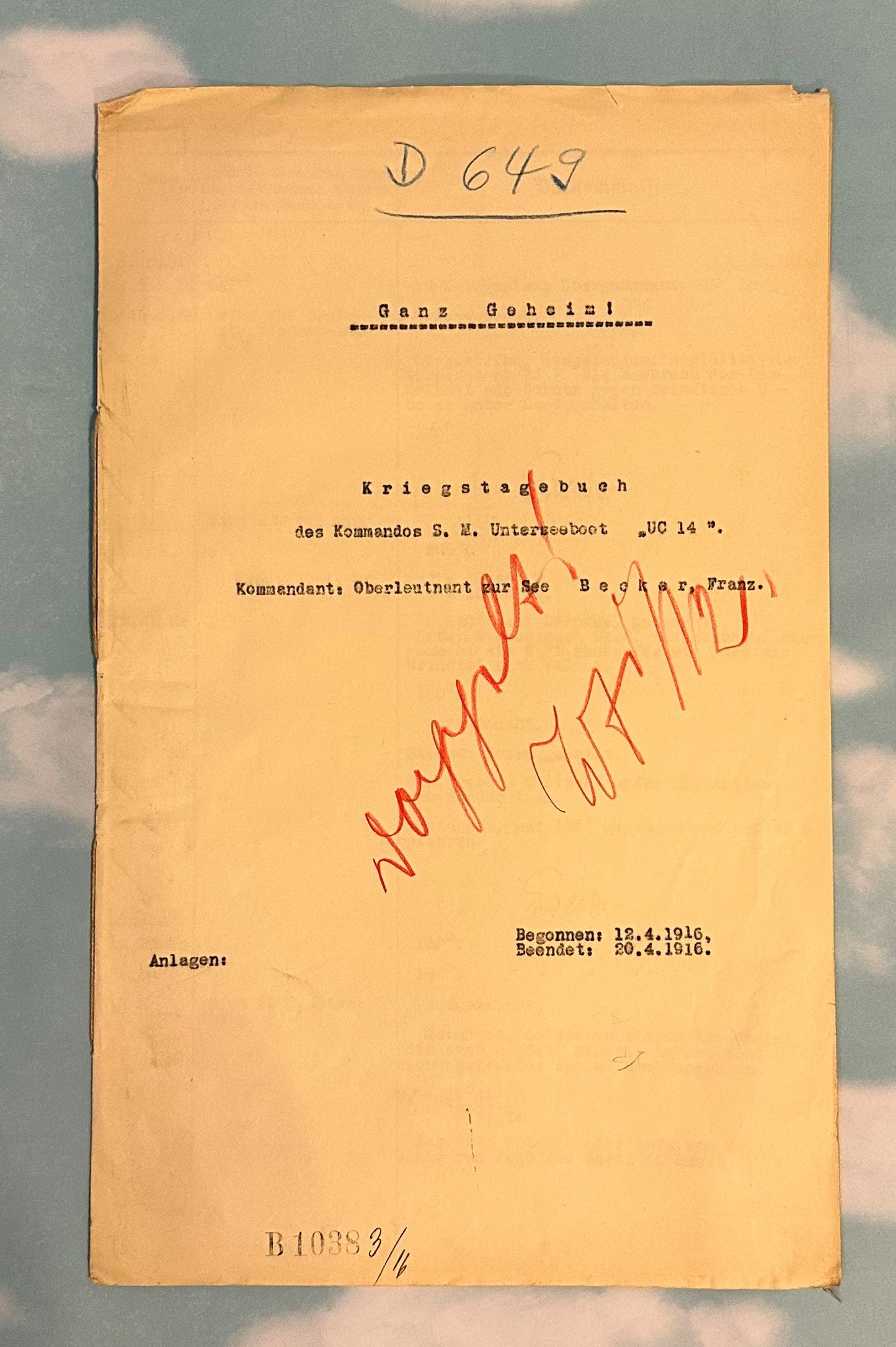Description
We are pleased to offer a rare find: a fine reserve officer’s pickelhaube that would have been suitable for five different Prussian Line Dragoner-Regiments. Dragoner-Regiments were part of the Prussian Army’s Kavallerie, along with Husaren, Ulanen, and Küraßiers. This particular helmet features squared front visors in contrast to Infanterie Regiments’ rounded ones. Its furniture is made of brass with a handsome gold tone, except for the Iron Cross-shaped reserve cross in the center of the wappen’s eagle, which is silver-toned. The date “1813” appears in the cross’s center.
The helmet’s leather body is of high quality with an excellent finish, showing only minor scarring. The leather is solid and has been well-preserved over the more than one hundred years since its original purchase, making it a pre-World War I-quality pickelhaube dated to the 1900-1910 period. This helmet is a rare find, as Dragoner-Regiment pickelhauben are much scarcer than Infanterie Regiment examples. Additionally, far fewer reserve officers’ pickelhauben existed than those from the regular army.
The cruciform base on this helmet differs from the rounded base used on Infanterie Regiment pickelhauben. The helmet’s spike is also extra tall, an unusual style for a Prussian helmet that demonstrates its original owner’s sense of style. The helmet comes with a full parade bush and gilt-toned trichter, which have been expertly cleaned and are in excellent condition. The correct officers’ State’s and Reich’s kokarden are present.
The interior features a lightly-used, brown leather sweatband in very fine condition, as is its attached light-brown silk liner. Although it exhibits a few light spots of perspiration, no signs of running or shredding are evident. Underneath the silk liner, all of the original hardware is in place, and a lightly pencilled-in “55” is present on the leather interior.
At Der Rittmeister Militaria, we take pride in offering spiked helmets whose condition is at least well above average, if not excellent. Our four critical criteria for collecting pickelhauben are originality, authenticity, condition, and quality. With this helmet, we believe we have found an item that fulfills all of these criteria.
Prussian Line Dragoner-Regiments were part of the Prussian Army’s Kavallerie, which also included the Husaren, Ulanen, and Küraßiers. Dragoner-Regiments were formed as early as 1689, with more being added in the early 19th Century during the Napoleonic Wars. The bulk of the line Kavallerie Regiments were formed around 1860, prior to the 1864 Danish-Prussian, the 1866 Austro-Prussian, and the 1870-1871 Franco-Prussian Wars.
By the time of the Franco-Prussian War, it was becoming evident that the cavalry’s future in modern warfare would be limited due to advances in technology such as bolt-action rifles and artillery, as well as the introduction of machine guns in the late 19th Century. During World War I, the cavalry’s role was reduced to scouting and fighting in the trenches alongside the infantry.
The fine reserve officer’s pickelhaube that is being offered was suitable for five different Prussian Line Dragoner-Regiments (Nrs 7, 8, 11, 13, and 14), all of which featured gold-toned brass fittings, in contrast to Dragoner-Regiments Nrs 4, 5, 6, 9, 12, and 15, which featured silver-toned fittings.
References:
- “Prussian Army.” Wikipedia, Wikimedia Foundation, 8 Mar. 2023, en.wikipedia.org/wiki/Prussian_Army.
- “Kavallerie.” Wikipedia, Wikimedia Foundation, 12 Mar. 2023, en.wikipedia.org/wiki/Kavallerie.
- “Franco-Prussian War.” Wikipedia, Wikimedia Foundation, 6 Mar. 2023, en.wikipedia.org/wiki/Franco-Prussian_War.
- “Cavalry in World War I.” Wikipedia, Wikimedia Foundation, 15 Feb. 2023, en.wikipedia.org/wiki/Cavalry_in_World_War_I.
